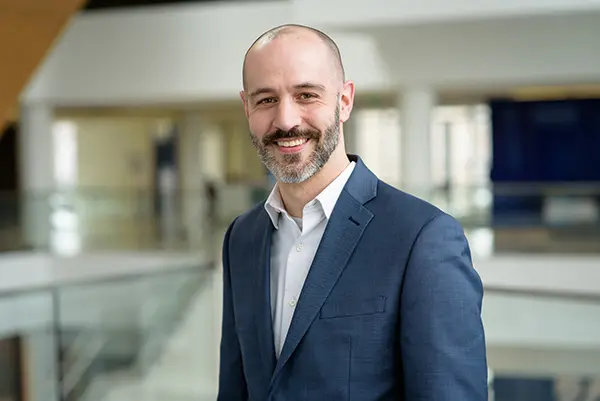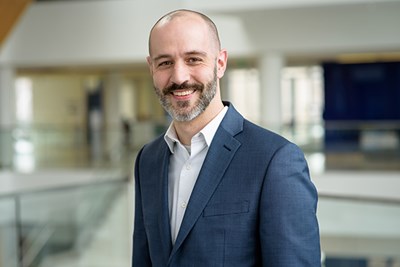U.S. Department of Justice Funds Three Major Studies
 Image by Artas
Image by Artas
12/05/2023
By Marlon Pitter and Katharine Webster
Do “red flag” laws that prevent troubled people from accessing guns help to prevent mass shootings?
How do police investigate citizen complaints, and what makes internal affairs units effective at holding their fellow officers accountable for their behavior?
Does sending mental health clinicians out on some calls with police officers lead to better long-term outcomes for people with mental health and substance abuse problems?
Those are some of the biggest questions in law enforcement today, and three faculty members from the School of Criminology and Justice Studies are trying to answer them, thanks to three major grants from the U.S. Department of Justice.
“Red Flag” Laws
 Image by Courtesy
Image by Courtesy
But such laws are relatively new and they differ considerably from state to state, so they are not well-studied, says Asst. Prof. Emily Greene-Colozzi, the principal investigator on a three-year, $985,000 grant from the National Institute of Justice that will examine the effectiveness of the laws.
In some states, only police can petition a court for an extreme-risk protection order, while in other states, prosecutors, family and household members or medical providers can also initiate a petition, she says. States also differ on what evidence is required to prove imminent danger and what procedures police should follow when they get tips from the public.
“Research shows that many mass shooters and terrorists talk about their intentions. They’re not subtle about it,” Greene-Colozzi says. “Usually, there are plans, hints or direct threats.”
While smaller studies done in individual states with red flag laws indicate that extreme-risk protection orders are helpful in preventing mass shootings and gun violence in general, it’s not always clear which aspects of the various laws are most effective, she says.
So Greene-Colozzi and two co-investigators will build and analyze a database of mass shootings in public places in the 21 states with extreme risk laws and the 29 states without them – as well as planned mass shootings that were prevented. They will collect data on each shooter’s or potential shooter’s social network, the details of that state’s extreme-risk law, any law enforcement investigation that took place, and the outcome.
“We will look at who was closest (to that person), who noticed something, if they reported it to somebody and did it progress to an extreme-risk protection order or not,” she says.
In some widely reported mass shooting cases, one or more people had notified law enforcement at different levels about warning signs of imminent violence, but “nothing progressed,” she says.
“If law enforcement are the only people who can petition, and they’re not taking that further step and petitioning, then that would be an important policy focus,” she says.
One of Greene-Colozzi’s co-investigators is University of South Carolina Asst. Prof. Brent Klein, who manages two federally funded databases of public mass shootings, the American School Shooting Study and the U.S. Extremist Crime Database.
The other investigator is Jaclyn Schildkraut at the Rockefeller Institute of Government. The Rockefeller Institute will disseminate the results not only to policy makers but also to the public, so people know what warning signs to look for and what they can do about them, Greene-Colozzi says.
Police Internal Affairs
 Image by Adrien Bisson
Image by Adrien Bisson
But that means the public often doesn’t have confidence in the outcome, he says.
To remedy that and to improve internal affairs policies and practices, Harris is starting a three-year study under a $907,000 National Institute of Justice grant that will look at what internal affairs officers and units do, how they do it, and what makes for better investigations and outcomes.
“We want those investigations to be thorough, fair and unbiased, and we want investigators to perform to the highest extent possible,” he says. “Right now, we know exactly nothing about them. This research is designed to fill that gap.”
Working with the National Association of Internal Affairs Investigators, whose leaders will serve on the research advisory board, Harris and his co-principal investigator, Assoc. Prof. Robert Worden from the State University of New York at Albany, will survey police departments across the U.S. about their internal affairs units, training, policies and outcomes.
The researchers will then interview internal affairs officers, their supervisors and police chiefs in selected cities to see which factors contribute to making an IA unit effective or low-performing, such as training, policies and the effort made by individual IA investigators. They will also look at each department’s police complaint files.
“We’re very excited about this research, because no one’s ever been able to do anything like it before,” Harris says. “By the time we’re done, we should be able to say with some confidence whether differences in policies, procedures, training and investigator effort result in better outcomes.”
Mental Health and Policing
 Image by Courtesy
Image by Courtesy
The aim is to de-escalate potentially dangerous situations, get mental health and other services for troubled people and, when possible, keep them out of the criminal justice system, says Morabito, who is also the associate chair of the School of Criminology and Justice Studies.
But while the researchers have good data on the immediate outcomes of calls, they don’t know whether the partnership helps people stay better connected to health care services or reduces the number of calls to police and EMTs in the long run, Morabito says. That’s because the police and medical center cannot share data on individuals, she says.
“We would like to find those prevention points where we can reduce the use of emergency services. Emergency services are never the best option,” she says. “It would be ideal to reduce reliance on police and EMS and to get people into preventive care, where it's less traumatic and expensive.”
Under a three-year, $420,000 planning grant from the U.S. Bureau of Justice Assistance, Morabito’s team will work with the police department and medical center on ways to share key long-term data on individuals without violating their confidentiality. Then they will pursue a larger grant to implement the data-sharing program and use the results to improve the partnership.
“One of the great things about my job working for UMass Lowell is that my research is also service,” Morabito says. “We're really committed to being engaged with the community, and this is one way I get to do that.”


